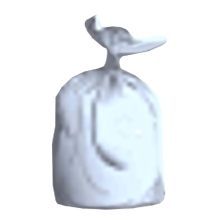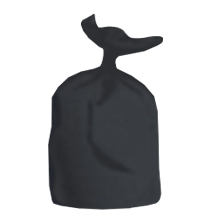Transport still remains Guernsey's biggest contributor of greenhouse gas emissions. This page looks at the current trends along with details for how Guernsey is looking to reduce transport emissions.
Transport emission figures
- Guernsey's greenhouse gas emissions from transport decreased by 44.4% (66.8kt of CO2 equivalent) between 1990 and 2020, and 25.2% between 2019 and 2020. The travel restrictions in place throughout 2020, as a result of the COVID-19 pandemic, significantly reduced the number of flights and ferries travelling to and from the Island which will have contributed to this decrease. However, transport still remains the biggest contributor of emissions for Guernsey. Levels of greenhouse gases emitted as a result of transport have generally been trending downwards since a peak in 2000. This is due to decreased road transport emissions.
- The majority of greenhouse gas emissions resulting from transport are carbon dioxide. Other non-greenhouse gas air pollutants, such as nitrogen dioxide and sulphur dioxide, are also present in vehicle exhaust emissions. 77% of transport emissions resulted from on-island road transport in 2020, with a further 10% from aviation and 10% from navigation. In 2019, aviation emissions amounted to 23% of total transport emissions, navigation amounted to 11% and road transport 65%. This difference between 2019 and 2020 highlights the effect COVID-19 restrictions had on off-Island transport compared with on-Island travel. More information about Guernsey's greenhouse gas emissions can be found at www.gov.gg/ghg.
On-Island Integrated Transport Strategy
- The On-Island Integrated Transport Strategy was approved by the States of Deliberation in 2014. The Strategy is designed to achieve a 'modal shift' within the behaviours of the community in order to reduce the number of miles travelled in private motor vehicles in favour of walking, cycling and buses by making these alternative modes of travel easier and more attractive. The Strategy also acknowledges that motor vehicles will remain the principal mode of transport in the Island because it is so convenient to use, so instead strives to reduce the number of journeys and miles of travel undertaken by private motor vehicles. The Strategy aims to:
- Address the adverse impact of all vehicles
- Support and incentivise transport alternatives
- Reduce the dominance of the private motor vehicle whilst recognising the vital role that the private motor vehicle continues to have in society
- Through the strategy, projects aiming to improve safety, accessibility and convenience of all road users are identified and carried out.
- More information about the strategy can be found here.
Electric and Hybrid Vehicles
- The States of Guernsey is committed to encouraging sustainable transport. Through the Climate Change Policy, the importation and sale of internal combustion engine vehicles (ICEVs) - petrol and diesel vehicles - is aligned with that of the United Kingdom. Presently, this phase out is required by 2030.
- The percentage of annual car registrations in Guernsey which were electric or hybrid was 14.43% in 2020 and 22.34% in 2021.
- As of the end of June 2022, there were 2,162 electric and hybrid cars in circulation, which made up 4.61% of the total estimated cars in circulation in Guernsey.
- In 2021, we saw an annual increase in electric and hybrid car registrations of almost 57%, compared to 2020 numbers.
- More information about electric transport can be found here.














